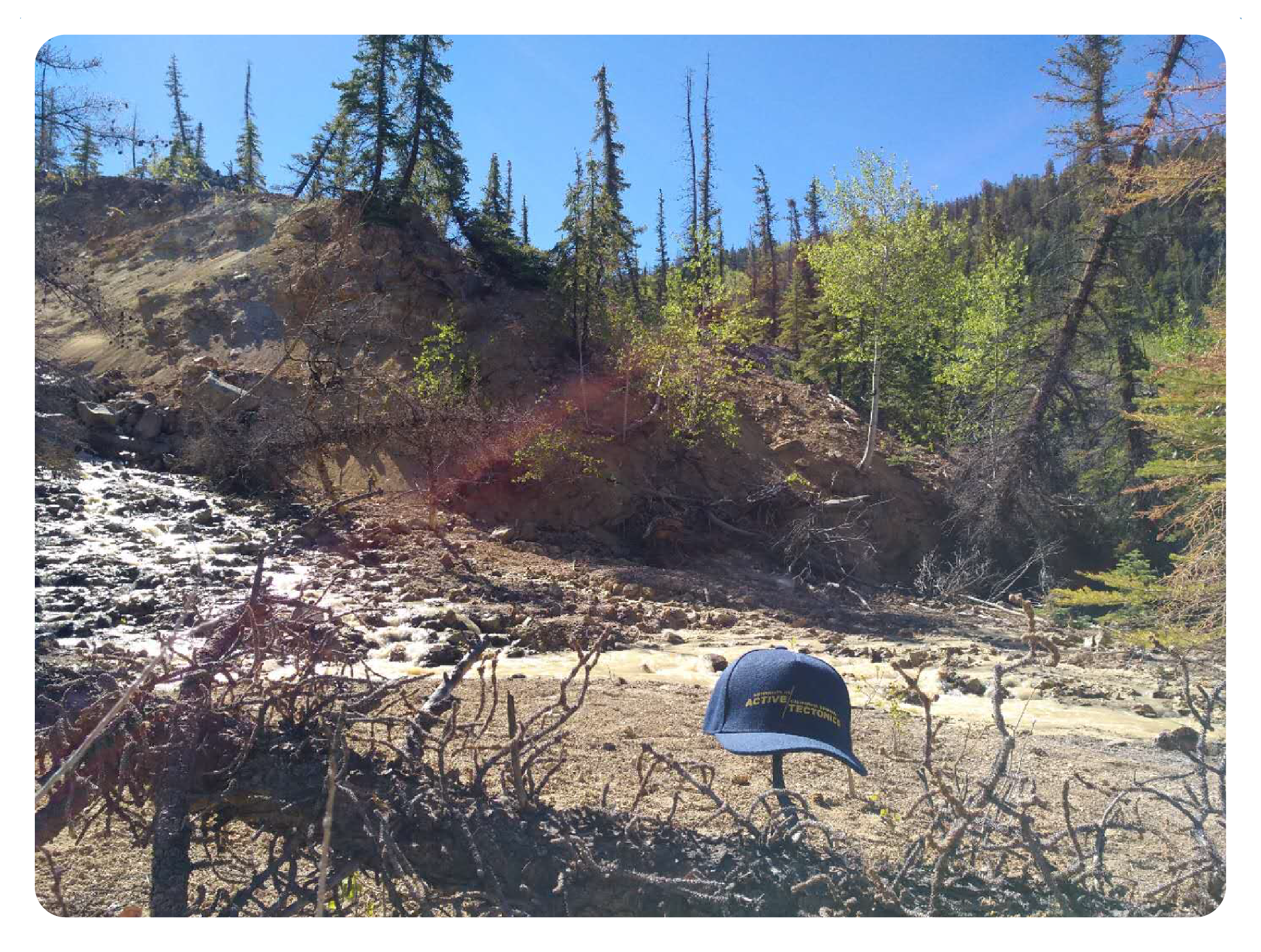
 |
|

AT cap in front of the advancing toe of the Slumgullion landslide
| Project Summary |
Landslide rheology governs the deformation and flow behavior of sliding masses. As rheology strongly varies as a function of the composition and environment of landslides, a wide range of viscosities have been suggested based on very limited experimental or observational constraints. Here we introduce a novel method to quantify the landslide rheology from remote sensing data. We focus on an ideal natural laboratory – the Slumgullion landslide, Colorado, which has moved at tens of millimeters per day for centuries. A joint analysis of UAVSAR InSAR-derived surface displacements and LiDAR DEM-derived landslide thickness at its toe allows us to invert for the intrinsic viscosity (109~1011.5 Pa·s under different degrees of plasticity) based on the Bingham plastic model. Detailed displacement measurements also elucidate local variations in magnitude and orientation. Our method presents the capability of remote sensing data to understand the rheology of quasi-static debris slides in general.
We also developed an InSAR phase-based approach to automatically extract the boundaries of the mobile geological structures without unwrapping; results have been (cross-)validated by pre-defined structural maps from field observations and different SAR data sets. For a specific minislide developed within the active main body, LiDAR DEM reveals an attachment to the opening of a 30 by 10 m pull-apart basin and bounding strike-slip faults. These extensional structures, nearby incised streams, and steepened local slopes helped establish the kinematic environment for the formation of this secondary structure.
|
| Tools | UAVSAR InSAR and LiDAR DEM |
| Geographic Location | Slumgullion, Colorado |
| Group Members Involved |
Xie Hu <Email> <Personal Web Site> Roland Bürgmann |
| Project Duration | 2018 - 2020 |
| More Information | GRL article < Hu and Bürgmann, 2020 > RSE article < Hu et al., 2020 > |